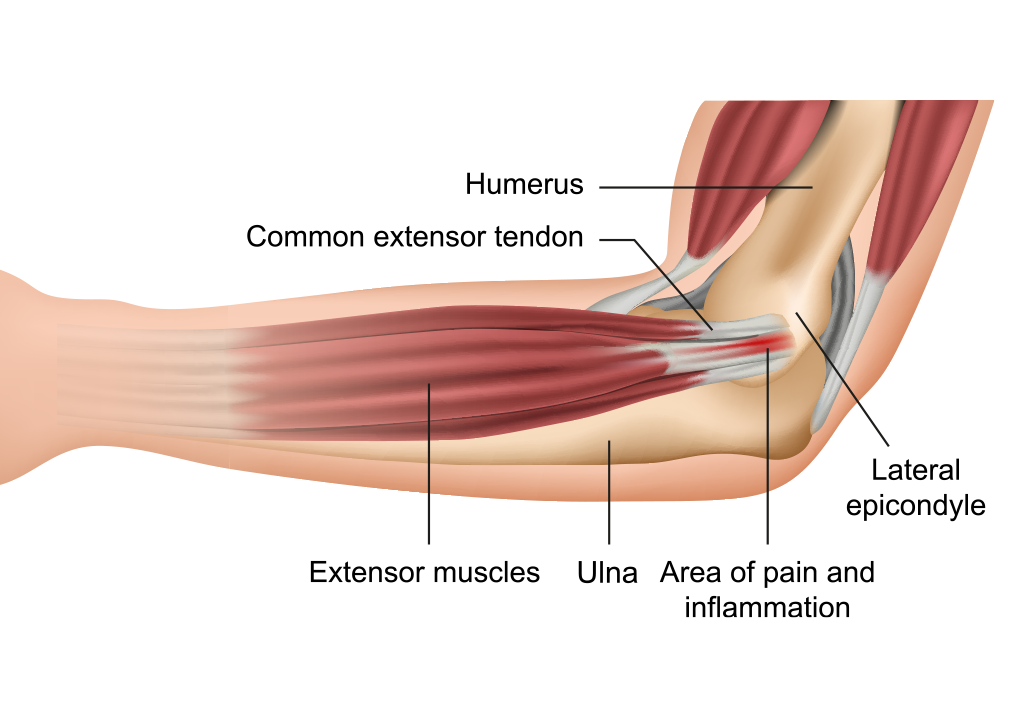Tennis Elbow is a condition that affects the muscles and tendons on the outer part of your elbow, or your lateral epicondyle, which inserts at the end of the forearm bones; hence, its medical name is “Lateral Epicondylitis”.
These muscles act to extend the wrist and fingers, bending the hand and fingers down away from the wrist. Damage can be in the form of inflammation or micro-tearing of these muscles and tendons.
Despite its name, Tennis Elbow can affect anyone, not just those who play tennis. Any repetitive movement around the elbow can lead to damage. Painters, plumbers, and carpenters can be prone to the condition.
Known causes can include:
Tennis Elbow most commonly affects people aged 30 to 50, but is not limited to this age range, due to the link with repetitive activity.
Quite often a single cause or starting point for Tennis Elbow isn’t easy to identify as it can begin in a very mild way developing gradually and worsening over weeks or months.
Common symptoms are:
The elbow is made up of three bones: humerus (upper arm), radius, and ulna (two forearm bones). These bones are supported by muscles, ligaments, and tendons to keep the joint in place.
The lateral epicondyle is one of several bony ‘bumps’ on the bottom end of the humerus, where tendons attach.
A tendon is a tough cord of tissue that connects muscle to bones.

The vast majority of patients with Tennis Elbow will find relief from non-surgical treatment.
Tennis Elbow has the potential to heal itself when the repetitive activity is stopped, although this is often not practical as it would impact lifestyle and occupation and can take anywhere from months to years. Treatment is recommended.
Initial solutions for Tennis Elbow include:
If there is no improvement over 6 to 12 weeks, surgery may be considered.
The purpose of surgery is usually to remove damaged muscle and reattach the healthy muscle to the bone.
This procedure may be done via open surgery, where an incision is made over the elbow, or via arthroscopy, using a smaller incision and miniature instruments. The decided method will depend on individual circumstances and extent of injury.
If you are looking to book an appointment, please call us on